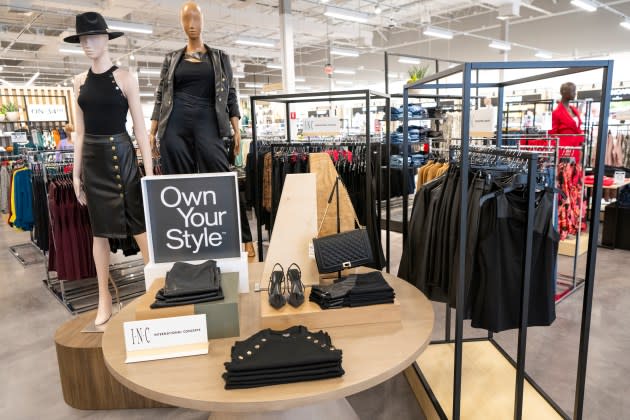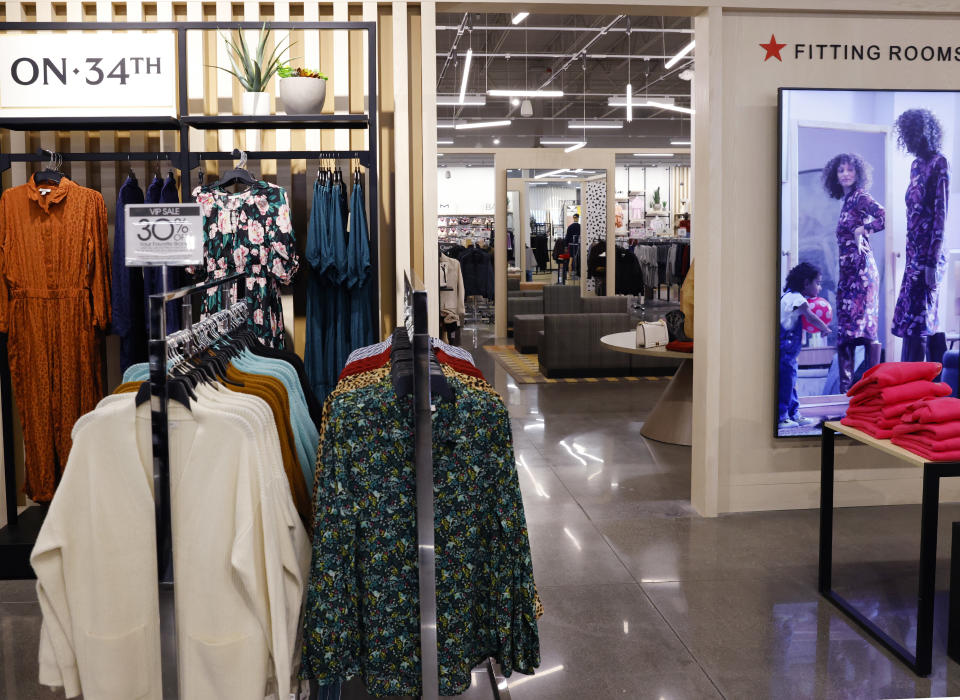Macy’s Ready to Run With Small-format Strategy

Macy’s Inc., after three years of testing and tinkering with scaled-down versions of its Macy’s department store, is poised to roll out the concept in a major way.
The retailer disclosed Tuesday that it is targeting an additional 30 openings of small-format Macy’s through 2025. The wave of openings will commence in 2024 and occur across the country.
More from WWD
Already, there are 11 small-format Macy’s locations operating, with another set to open in November, meaning the store count on the format could increase to 42 in 2025.
“We have been at this coming up to three years now, testing and learning and iterating each model. We have now got a pretty good amount of insight and learning so we are in a good spot to take it out to the markets,” Marc Mastronardi, chief stores officer for Macy’s Inc., told WWD.
Mastronardi said Tuesday’s announcement regarding the 30 openings refers entirely to the scaled-down Macy’s format. The company is in the process of signing leases and will announce locations as they are signed, he added.

“We are making progress,” Mastronardi said. “The 30 we are speaking to starting in 2024 are really geared at the Macy’s side of the conversation. At some point, the Bloomingdale’s team will speak to the future of Bloomie’s. There are only two Bloomie’s and a third to come. They are still learning.” The third Bloomie’s is set to open on Nov. 2 in University Village in Seattle, marking Bloomingdale’s entry into the Pacific Northwest.
He said the rollout strategy has flexibility, given the various types of settings where a smaller format could open.
Mastronardi said scaled-down Macy’s units from start to finish take about a year to get up and running. He also said all new off-mall Macy’s units will simply be called Macy’s, whereas those that already opened have been under the Market by Macy’s banner. They will likely be renamed Macy’s.
Asked if the small format stores would be material to Macy’s Inc.’s financial results next year or in 2025, Mastronardi said, “Having 12 today and another 30 is starting to give us a bit of scale. They will be contributors to our growth as an omni ecosystem retailer.” He declined to specify any financial figures on the format, though the corporation in its announcement Tuesday did indicate that year-to date through spring 2023, Macy’s small-format stores open for more than one fiscal year have achieved positive comparable owned plus licensed sales growth. “The consumer response has been really positive so far,” Mastronardi noted.
Macy’s Inc. officials said the rationale for opening smaller off-mall units is threefold: to enter markets where Macy’s Inc. does not operate any stores, to fill-in and bolster a market where Macy’s Inc. already has a presence, and third, to replace a department store that is closing with a smaller format.
It is critical that Macy’s find new avenues for growth in light of how tough the department store business has been for several years. Macy’s Inc. last year posted $24.4 billion in total sales, including its Macy’s, Bloomingdale’s and Bluemercury brands. The corporation is anticipating a decline in sales this year and a gain next year.
Macy’s has put department stores closings on hold, but is expected to close some more in the future. Macy’s previously disclosed a plan to close 125 department stores, of which 80 have already closed since 2019. Five closings were planned for 2023. Beyond those, “We don’t have any comment on closures,” Mastronardi said. “If and when we do decide to close stores we will share it.”
Timing on the remaining 40 locations, which according to the company have all been cash positive, is to be determined and to a large extent will be based on where additional off-mall formats can replace them. The Macy’s brand operates 440 department stores, while Bloomingdale’s has 34 department stores, 20 outlets, two Bloomie’s and two overseas licensed department stores in Dubai and Kuwait.
Both Bloomie’s and smaller Macy’s units operate in off-mall sites, which can be in off-price, power, lifestyle and strip centers. The idea is to bring the brands closer to existing and desired customers while also encouraging more frequent visits. The environments have open-floor plans and fixturing that is movable so Macy’s can either enlarge or shrink brand and category presentations depending on sales trends. Also, the specialized formats are roughly one fifth the size of typical full-line Macy’s department stores, which average in the 180,000- to 200,000-square-foot range. Macy’s and Bloomingdale’s operate department stores in malls and the downtowns of big cities.
Small-format stores are one of Macy’s Inc.’s five growth vectors, the others being private brands, online marketplaces, luxury and personalizing offerings and communications.
Asked what has changed since the corporation started launching the specialized formats, Mastronardi said, “There is a much more robust approach to identifying locations. We like to be in high-traffic centers with grocery or off-price,” where Macy’s offers a differentiated assortment from other stores. “We are understanding where we can be, relative to a mall, and where we can have a mall and off-mall presence,” in certain situations, Mastronardi mentioned. Data obtained through digital sales are helping Macy’s understand where there’s a shopper for Macy’s and therefore where to locate a store, and how to shape the assortments per local preferences.
Asked what some of the bestsellers at the off-mall Macy’s stores are, Mastronardi replied, “Our best private brands including INC and On 34th,” as well as such luxury and national brands as Polo, Chanel, Nike and Levi’s. Generally, popular categories at the specialized Macy’s are toys, career apparel and beauty.
“Over the past three years, we’ve gained valuable insight and have been methodical in our approach to our small-format stores,” Mastronardi said in his prepared statement. “We took the time to test and iterate a distinct shopping experience that focuses on convenience, curated merchandise, local events and services that have allowed us to cultivate a highly engaged customer base.”
“We are excited to accelerate the expansion of our small-format strategy as we continue to innovate and reposition our store portfolio to better serve our customers,” said Adrian Mitchell, chief operating officer and chief financial officer for Macy’s Inc., in a prepared statement. “Our small-format stores are efficient to operate, provide the customer with a shopping alternative within our omnichannel ecosystem and present a unique opportunity to target high-traffic shopping centers. Our small-format strategy is one way we intend to harness the full power of the Macy’s brand to deliver sustainable, profitable sales growth for Macy’s Inc. beginning in 2024.”

Best of WWD


